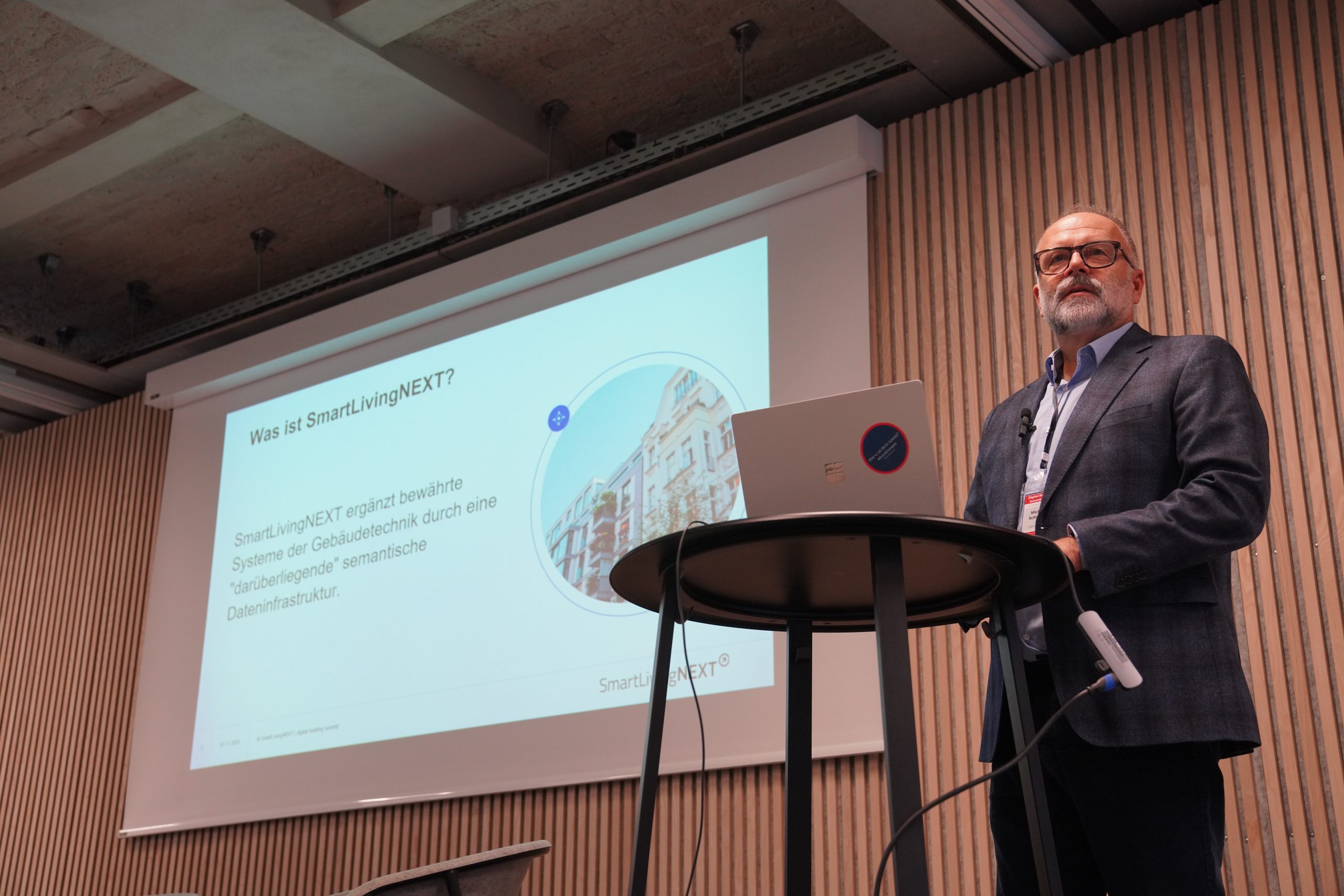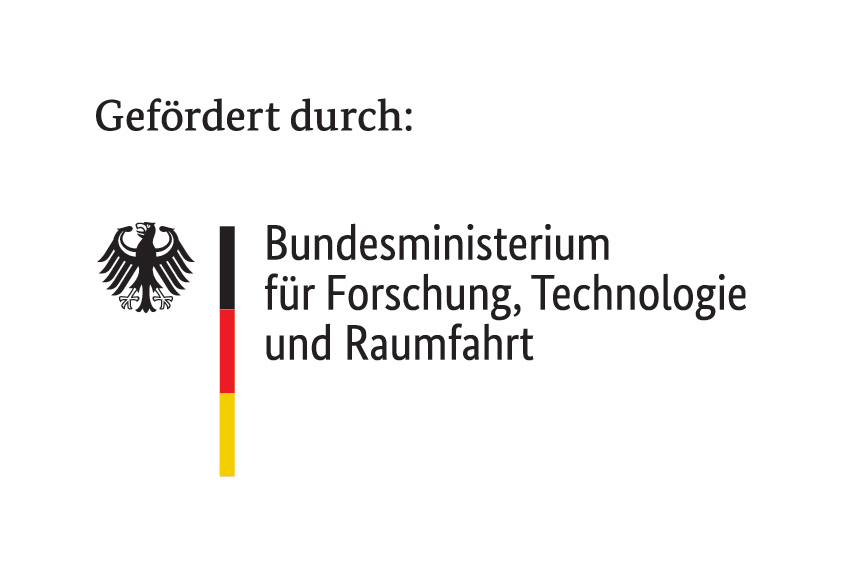Data rooms, sensor technology and AI agents: Rethinking the future of living
30. July 2025
10 minutes
BrAIniacs GmbH specializes in the use and development of artificial intelligence (AI): from the implementation of large language models and tailored chatbots to the provision of high-quality learning data. We talk to Dr. Maximilian Lowin, CTO of BrAIniacs GmbH, about the potential of artificial intelligence (AI) in the building sector and the motivation behind the company’s involvement in SmartLivingNEXT.

Dr Lowin, BrAIniacs GmbH specializes in the use of large language models and tailored chatbots. How do these technologies specifically contribute to the further development of smart living solutions? For example, can such systems improve or even automate communication between building technology, providers and residents?
Chatbots based on large language models are a great technological way for humans to interact with computers in a natural way. They can interpret the queries that people have quite reliably and provide individual answers. This avoids media disruptions and creates inclusion: for example, if a tenant can use chatbots to report problems in their apartment, they no longer have to resort to long, standardized forms that may not be 100% relevant to their actual request. In addition, chatbots can use individual language to reach different sections of society that are currently still potentially being forgotten with standardized forms. This can range from simplified language and foreign languages to the translation of technical jargon.
Improved communication is therefore also conceivable and even sensible for building technology. If we could choose, most people would much rather interact with smart living systems using natural language than operating five different apps on their cell phone. Standardized interfaces with building technology can help make this wish not just a vision, but a realistic future. SmartLivingNEXT is making an important contribution here with its AI-supported ecosystem.
Can you give us examples from your previous work where AI solutions from BrAIniacs have been successfully used in areas similar to smart living? Are there any lighthouse projects that SmartLivingNEXT could learn from for its own developments?
In addition to chatbots for various customer groups, we are also developing classic AI systems that can use data to make predictions in order to improve decisions. We are currently working with RFID Konsortium GmbH on an AI solution for logistics processes. Here, we use sensors to record data that we analyze with AI. This enables us to predict whether or not goods will leave a certain goods-in gate – a process that previously involved a lot of initial effort when equipping warehouses with RFID sensors due to complicated measurements. We can significantly simplify this process using AI.
At SmartLivingNEXT, we also see a clear focus on sensor technology and simplification through AI. In the smart living sector, too, there is a wide variety of sensor technology that can already measure a lot of information today. If this information is used in the form of data and bundled, it can be used for a wide variety of use cases thanks to clever connections to AI algorithms. Data-driven decision-making can thus help to simplify processes, work more energy-efficiently and increase comfort in the home.
You recently became an associated partner of SmartLivingNEXT. What prompted you to enter into this collaboration?
We had already followed the predecessor project ForeSight with excitement. There was therefore no question that we were interested in SmartLivingNEXT. AI is more than just a tool for us. We are fascinated to see how various applications in the smart living sector are using AI. As a German SME, we can only benefit from such success stories made in Germany. Learning from them and taking ideas and impulses with us helps us move forward. We are also particularly interested in the sovereign and trustworthy SmartLivingNEXT ecosystem based on European values with the six satellite projects. For example, we are supporting the BIM-4-Care project in an advisory capacity by connecting it to the SmartLivingNEXT Dataspace.
Our vision at SmartLivingNEXT is based on the complete digitalization of residential buildings with the help of shared data rooms. How do you see the role of artificial intelligence in this context? What specific advantages can AI offer to not only enable these processes, but also make them more efficient and future-proof?
The digitalization of residential buildings is an important step towards making this area more intelligent. AI can only be used sensibly if high-quality and, above all, real data is available. Research is currently primarily based on data sets from English-speaking countries. This makes it all the more important that real data that reflects regional conditions is also collected here in Germany through shared data spaces. This allows AI to make better predictions. We are therefore pleased to hear that SmartLivingNEXT is taking this important step and is also taking the legal situation into account thanks to its special architecture. We therefore see AI as an important driver that drives digitalization forward. This is the only way to collect data that can later be analyzed by machines. This makes it possible to automatically identify inefficiencies that are difficult for humans to detect, as they are unable to keep track of the vast amounts of data. AI therefore complements existing expert knowledge, but also helps to manifest it and protect against knowledge loss.
Sustainability is playing an increasingly important role, including in the digitalization of residential buildings. How does BrAIniacs GmbH take aspects such as energy efficiency, resource conservation and CO₂ reduction into account in the development of its technologies? Can AI solutions even actively contribute to the sustainable design of smart living concepts?
Our algorithms are designed in such a way that the prediction performance must be in line with the energy consumption. Complex AI models often consume a lot of energy because they require computers with high computing power. However, a task can be performed just as well by less complex models. Let’s take the example of language models mentioned at the beginning, which are used in chatbots, among other things. Many companies rely on tried-and-tested solutions such as ChatGPT here, without realizing how much energy is actually consumed during a request. Instead, in many areas we rely on more lightweight models that can also be operated locally at a company itself. This not only consumes less energy, but also strengthens the digital sovereignty of companies.
In the field of smart living, the focus on energy-efficient operation of AI algorithms is all the more important for several reasons. Firstly, AI algorithms themselves are being used to identify potential energy savings. This is great, especially because algorithms can overview and compare much more data than humans and can therefore discover much more potential. They also make more objective decisions and can optimize several apartments or even residential buildings at the same time while respecting data protection. However, if the algorithms now consume more energy than they save, we have achieved a high degree of technologization, but no real added value has been created. On the other hand, it must be borne in mind that measures to change the living environment, such as installing additional insulation in existing buildings, can effectively contribute toreducing CO2 emissions. However, such measures are very expensive and take a lot of time. An AI-based solution, on the other hand, is often scalable and can therefore be retrofitted quickly and cost-effectively.
When you think about the next five to ten years, how do you see the future of AI in the smart living sector? Are there any technologies, approaches or visions that you think have particularly high potential to make a lasting impact on this market?
We have recently seen many success stories and visions of the future in the field of chatbots in the direction of AI agents that can not only process information but also make decisions. However, AI agents are not a new invention of generative AI and have been used in smart living systems for a long time. However, I think that there is still a lot of potential to be exploited here in order to make the smart living sector truly intelligent in the long term. Context-sensitive areas such as the living environment in particular can only benefit from more and better data and algorithms. The field of generative AI can also further advance the smart living sector. Generative AI does not just have to consist of ChatGPT or the creation of images to design PowerPoint slides. Generative AI can also generate data synthetically. This means, for example, that algorithms can be adapted to new situations for which there is not yet sufficient real data available. In the field of smart living, this could be new apartments that have just been built or new behaviors resulting from a change of tenant or new regulations. We will see a lot of technological progress in the coming years and I am looking forward to being able to follow this progress live as an associated partner of SmartLivingNEXT.
Listen to the article (in German):
Editorial office:
Ilka
Klein
Category:
Flagship project




